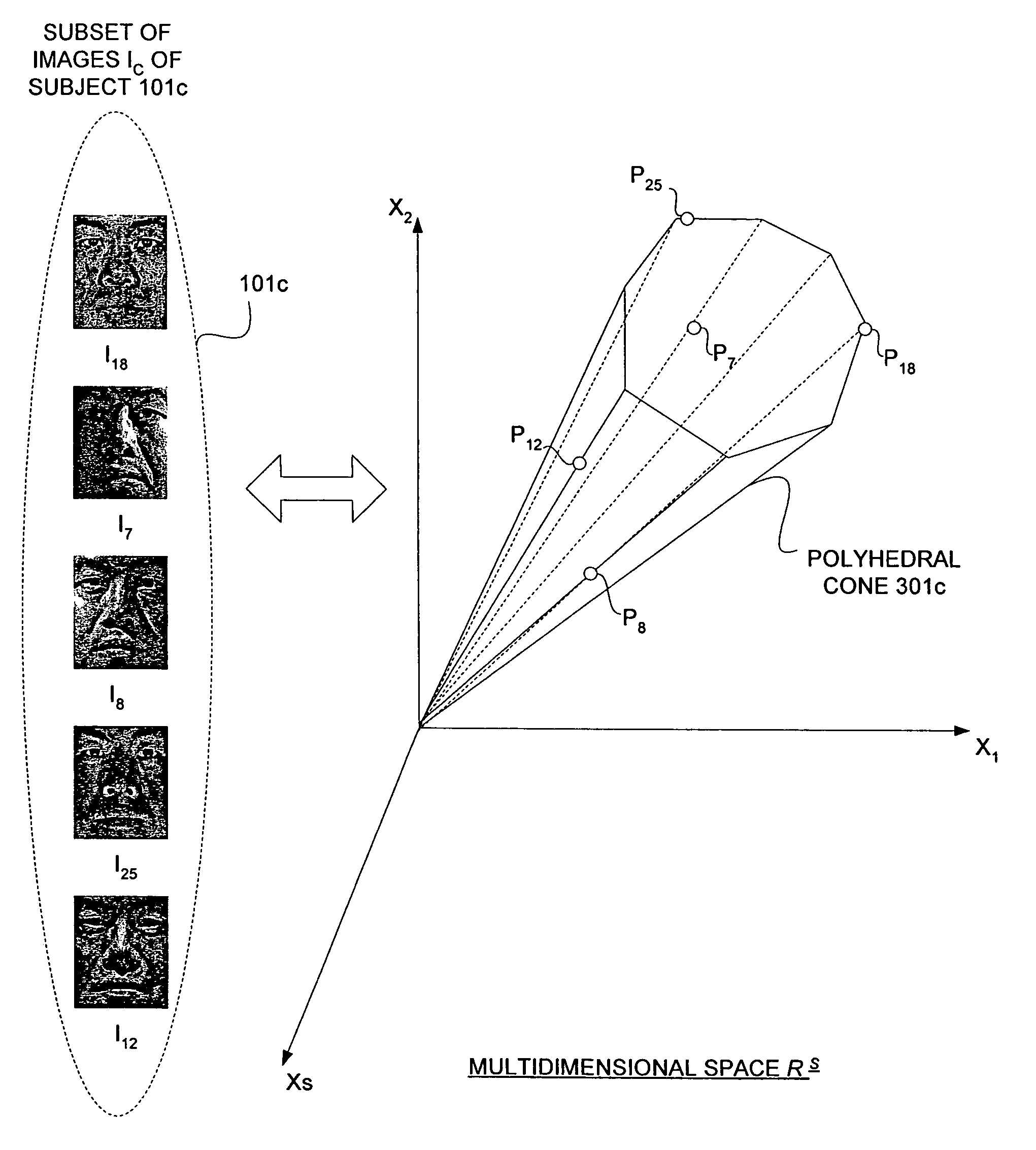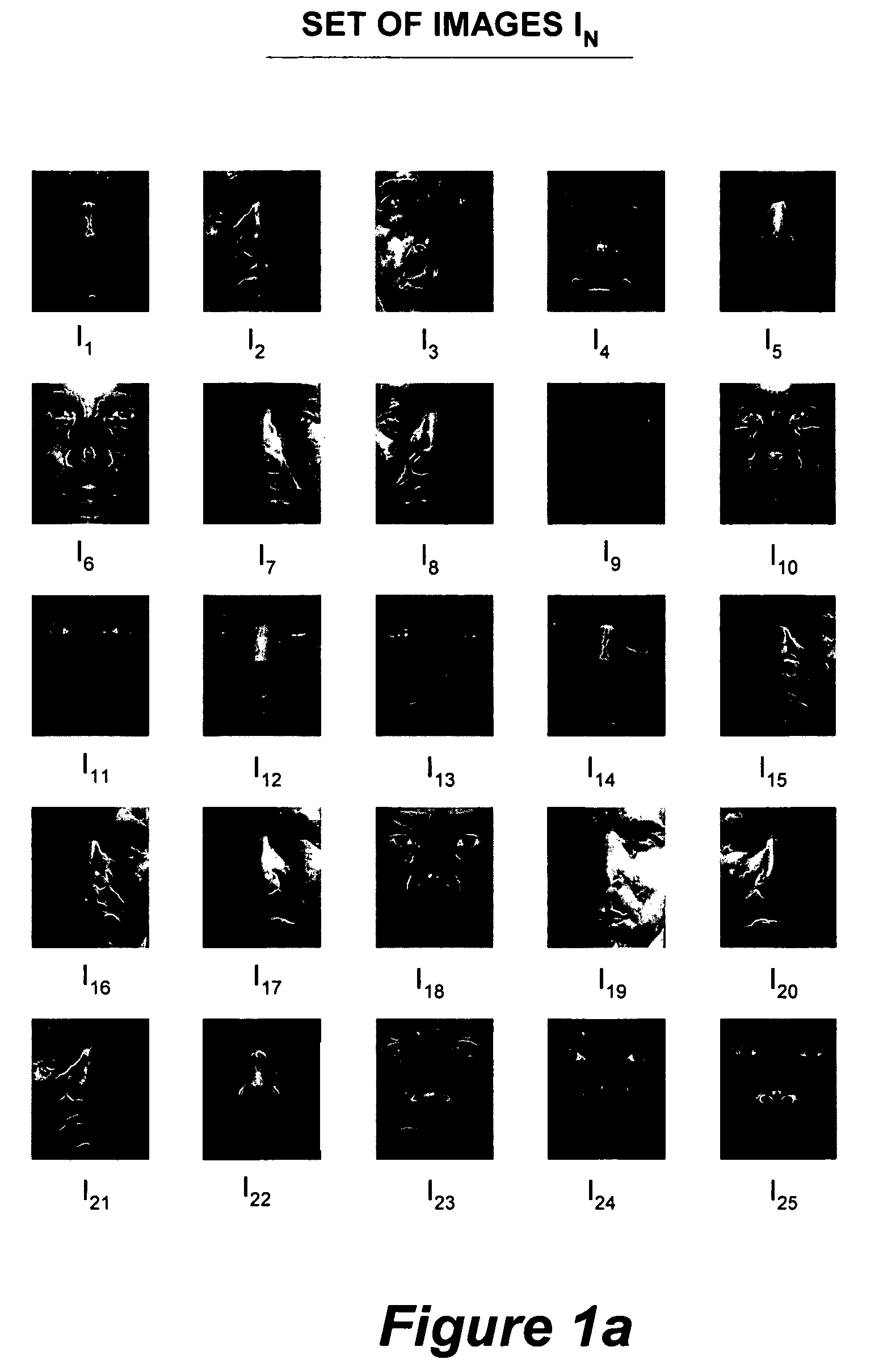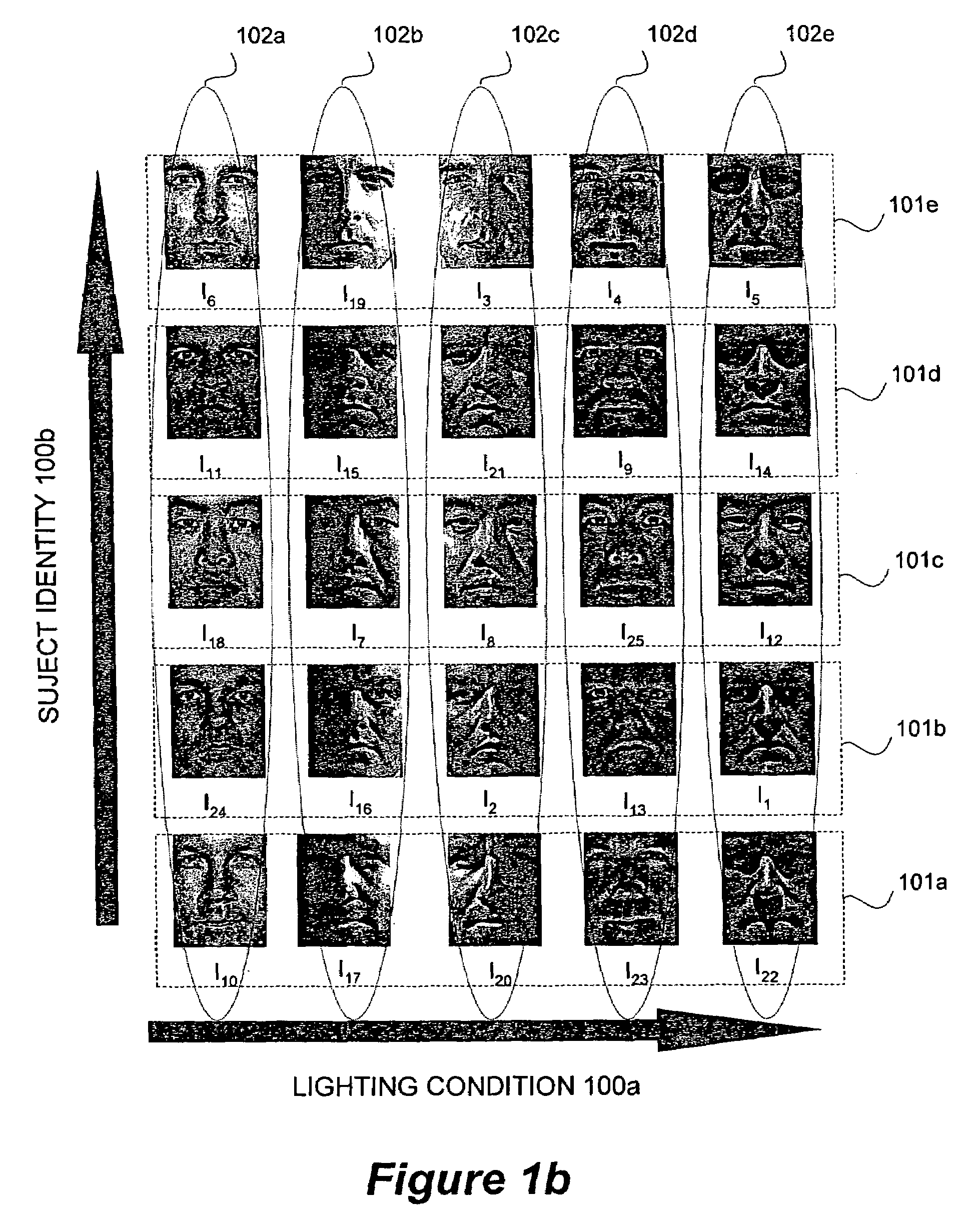Clustering appearances of objects under varying illumination conditions
a technology of illumination conditions and clustering images, applied in the field of computer vision, can solve the problems of difficult clustering of three-dimensional (3-d) images according to the subject represented, and the difficulty of clustering by identity, and achieve the effect of high effectiveness and straightforward implementation
- Summary
- Abstract
- Description
- Claims
- Application Information
AI Technical Summary
Benefits of technology
Problems solved by technology
Method used
Image
Examples
Embodiment Construction
[0019]The Figures and the following description relate to preferred embodiments of the present invention by way of illustration only. It should be noted that from the following discussion, alternative embodiments of the structures and methods disclosed herein will be readily recognized as viable alternatives that may be employed without departing from the principles of the claimed invention.
[0020]Referring now to FIGS. 1a and 1b, a set of digital images IN organized in different ways is shown by way of example. FIG. 1a shows the set of images IN representing male human faces taken under different illumination conditions as indicated by the shadows and bright spots on the faces. The set images IN represent different subjects having a distinct identity. In FIG. 1a, the images IN are randomly arranged.
[0021]Conversely, FIG. 1b shows the same set of images IN but arranged or clustered in several subsets of images Iij, where i represents the subjects identity and j represents the illumin...
PUM
 Login to View More
Login to View More Abstract
Description
Claims
Application Information
 Login to View More
Login to View More - R&D
- Intellectual Property
- Life Sciences
- Materials
- Tech Scout
- Unparalleled Data Quality
- Higher Quality Content
- 60% Fewer Hallucinations
Browse by: Latest US Patents, China's latest patents, Technical Efficacy Thesaurus, Application Domain, Technology Topic, Popular Technical Reports.
© 2025 PatSnap. All rights reserved.Legal|Privacy policy|Modern Slavery Act Transparency Statement|Sitemap|About US| Contact US: help@patsnap.com



